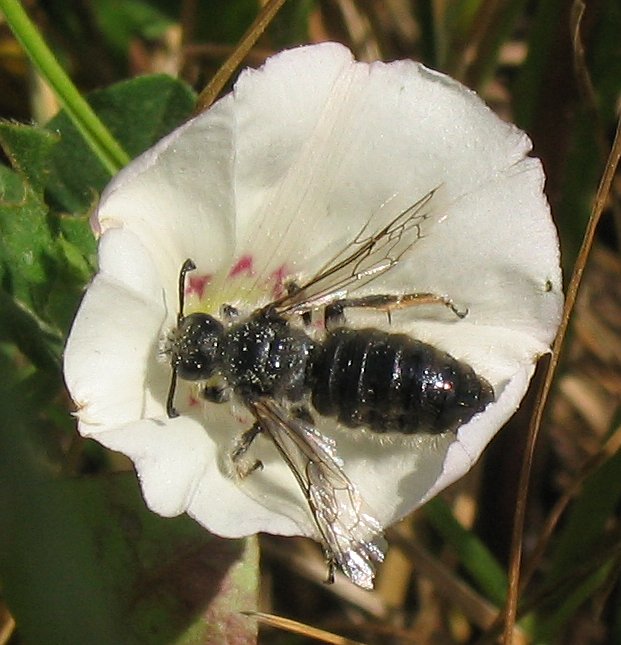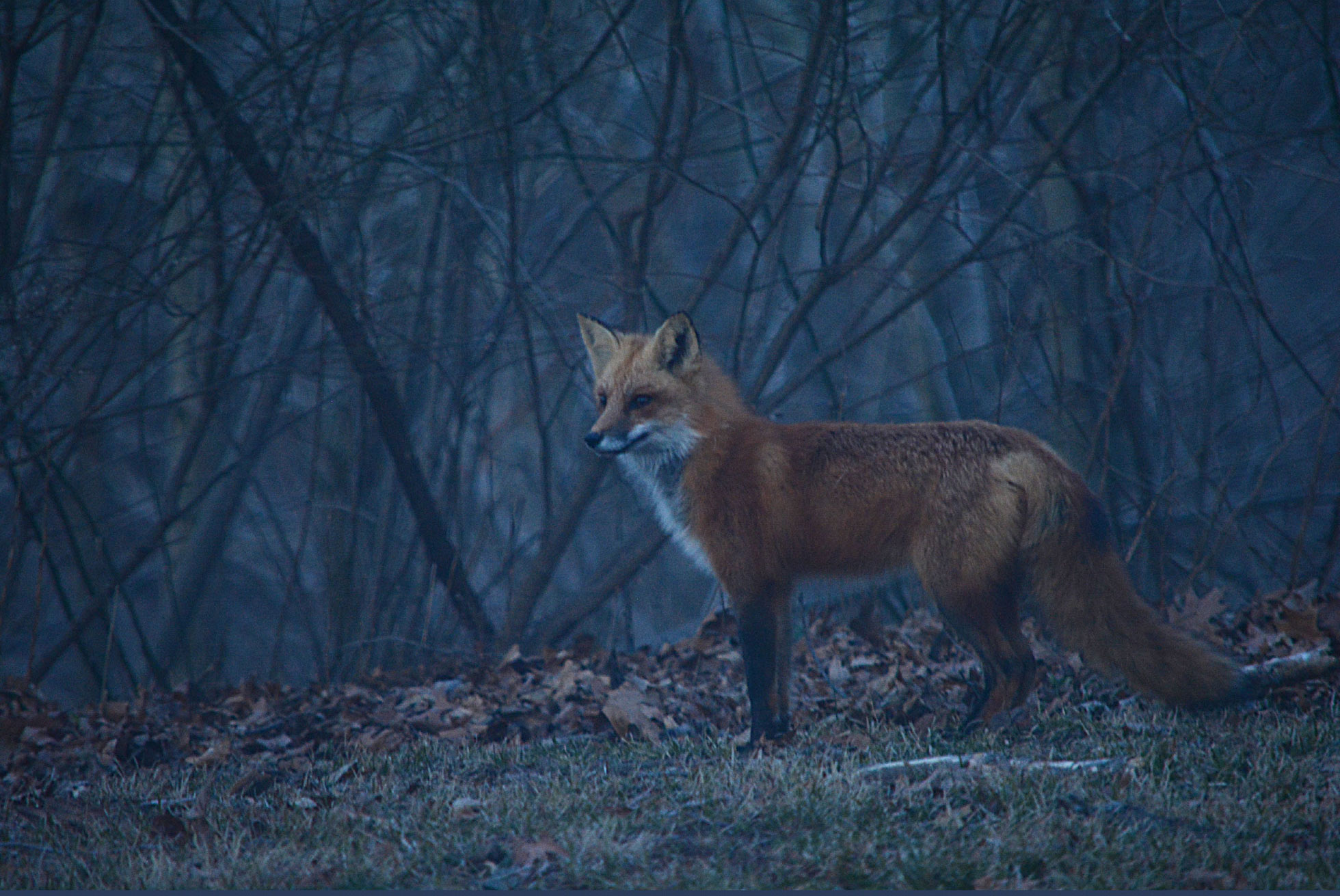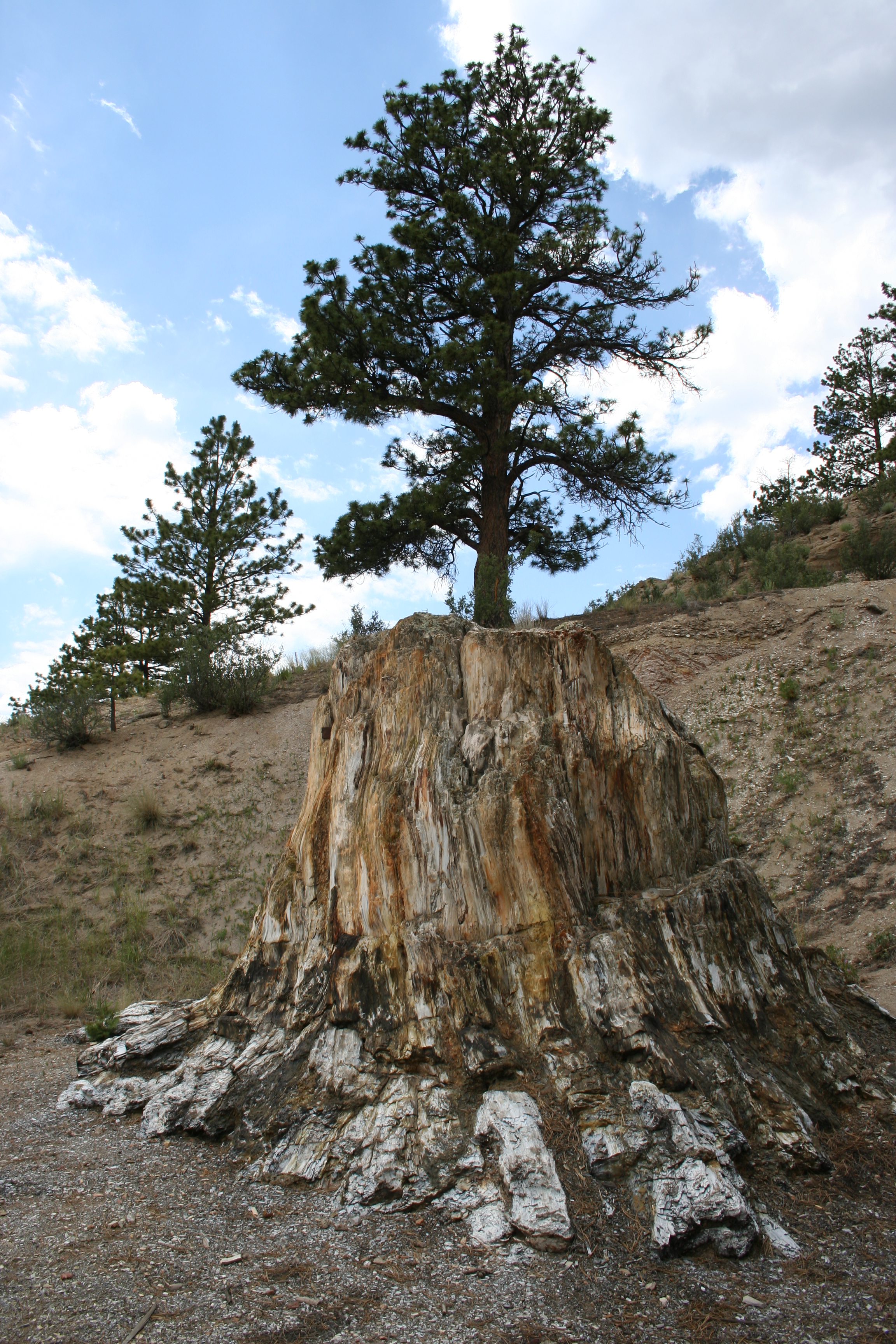|
Andrenid Bee
The Andrenidae (commonly known as mining bees) are a large, nearly cosmopolitan family of solitary, ground-nesting bees. Most of the family's diversity is located in temperate or arid areas (warm temperate xeric). It includes some enormous genera (e.g., ''Andrena'' with over 1300 species, and ''Perdita'' with over 700). One of the subfamilies, Oxaeinae, is so different in appearance that they were typically accorded family status, but careful phylogenetic analysis reveals them to be an offshoot within the Andrenidae, very close to the Andreninae.C. D. Michener (2007) ''The Bees of the World'', 2nd Edition, Johns Hopkins University Press. Description The Andrenidae are typically small to moderate-sized bees, which often have scopae on the basal segments of the leg in addition to the tibia, and are commonly oligolectic (especially within the subfamily Panurginae). They can be separated from other bee families by the presence of two subantennal sutures on the face, a primitive tra ... [...More Info...] [...Related Items...] OR: [Wikipedia] [Google] [Baidu] |
Alocandreninae
The bee subfamily Alocandreninae contains only one genus and one species, ''Alocandrena porteri'', which is found in Peru. It seems to be restricted to the western side of the Andes Mountains. It has been recorded throughout the year, suggesting multiple generations per year. Females collect pollen from ''Lycopersicon ''Lycopersicon'' was a genus in the flowering plant family Solanaceae (the nightshade The Solanaceae , or nightshades, are a family of flowering plants that ranges from annual and perennial herbs to vines, lianas, epiphytes, shrubs, and tre ...'' species. References Andrenidae Monotypic bee genera {{Andrenidae-stub ... [...More Info...] [...Related Items...] OR: [Wikipedia] [Google] [Baidu] |
Colletidae
The Colletidae are a family of bees, and are often referred to collectively as plasterer bees or polyester bees, due to the method of smoothing the walls of their nest cells with secretions applied with their mouthparts; these secretions dry into a cellophane-like lining.C. D. Michener (2007) ''The Bees of the World'', 2nd Edition, pg. 133, Johns Hopkins University Press. The five subfamilies, 54 genera, and over 2000 species are all (with the known exception of but one species, '' Amphylaeus morosus'') evidently solitary, though many nest in aggregations. Two of the subfamilies, Euryglossinae and Hylaeinae, lack the external pollen-carrying apparatus (the scopa) that otherwise characterizes most bees, and instead carry the pollen in their crops. These groups, and most genera in this family, have liquid or semiliquid pollen masses on which the larvae develop. They can be found all over the world, but the most species live in South America and Australia. Over 50% of all bee spec ... [...More Info...] [...Related Items...] OR: [Wikipedia] [Google] [Baidu] |
Apidae
Apidae is the largest family within the superfamily Apoidea, containing at least 5700 species of bees. The family includes some of the most commonly seen bees, including bumblebees and honey bees, but also includes stingless bees (also used for honey production), carpenter bees, orchid bees, cuckoo bees, and a number of other less widely known groups. Taxonomy In addition to its historical classification (honey bees, bumble bees, stingless bees and orchid bees), the family Apidae presently includes all the genera formerly placed in the families Anthophoridae and Ctenoplectridae. Although the most visible members of Apidae are social, the vast majority of apid bees are solitary, including a number of cleptoparasitic species. The old family Apidae contained four tribes (Apinae: Apini, Euglossini and Bombinae: Bombini, Meliponini) which have been reclassified as tribes of the subfamily Apinae, along with all of the former tribes and subfamilies of Anthophoridae and the ... [...More Info...] [...Related Items...] OR: [Wikipedia] [Google] [Baidu] |
Halictidae
Halictidae is the second-largest family of bees (clade Anthophila) with nearly 4,500 species. Halictid species are an extremely diverse group that can vary greatly in appearance. These bees occur all over the world and are found on every continent except Antarctica. Usually dark-colored (frequently brown or black) and often metallic, halictids are found in various sizes, colors and patterns. Several species are all or partly green and a few are red, purple, or blue. A number of them have yellow markings, especially the males, which commonly have yellow faces, a pattern widespread among the various families of bees. The family is one of many with short tongues and is best distinguished by the arcuate (strongly curved) basal vein found on the wing. Females in this family tend to be larger than the males. They are commonly referred to as "sweat bees" (especially the smaller species), as they are often attracted to perspiration. Ecology Most halictids nest in the ground, often in ... [...More Info...] [...Related Items...] OR: [Wikipedia] [Google] [Baidu] |
Ocellus
A simple eye (sometimes called a pigment pit) refers to a form of eye or an optical arrangement composed of a single lens and without an elaborate retina such as occurs in most vertebrates. In this sense "simple eye" is distinct from a multi-lensed "compound eye", and is not necessarily at all simple in the usual sense of the word. The structure of an animal's eye is determined by the environment in which it lives, and the behavioural tasks it must fulfill to survive. Arthropods differ widely in the habitats in which they live, as well as their visual requirements for finding food or conspecifics, and avoiding predators. Consequently, an enormous variety of eye types are found in arthropods. They possess a wide variety of novel solutions to overcome visual problems or limitations. Use of the term ''simple eye'' is flexible, and must be interpreted in proper context; for example, the eyes of humans and of other large animals such as most cephalopods, are '' camera eyes'' and i ... [...More Info...] [...Related Items...] OR: [Wikipedia] [Google] [Baidu] |
Vespertine (biology)
Vespertine is a term used in the life sciences to indicate something of, relating to, or occurring in the evening. In botany, a vespertine flower is one that opens or blooms in the evening. In zoology, the term is used for a creature that becomes active at dusk, such as bats and owls. Strictly speaking, however, the term means that activity ceases during the hours of full darkness and does not resume until the next evening. Activity that continues throughout the night should be described as nocturnal. Vespertine behaviour is a special case of crepuscular behaviour; like crepuscular activity, vespertine activity is limited to dusk rather than full darkness. Unlike vespertine activity, crepuscular activity may resume in dim twilight before dawn. A related term is matutinal, referring to activity limited to the dawn twilight. The word ''vespertine'' is derived from the Latin word ', meaning "evening". See also * Crypsis * Matutinal Matutinal, matinal (in entomological writin ... [...More Info...] [...Related Items...] OR: [Wikipedia] [Google] [Baidu] |
Crepuscular
In zoology, a crepuscular animal is one that is active primarily during the twilight period, being matutinal, vespertine, or both. This is distinguished from diurnal and nocturnal behavior, where an animal is active during the hours of daylight and of darkness, respectively. Some crepuscular animals may also be active by moonlight or during an overcast day. Matutinal animals are active only before sunrise, and vespertine only after sunset. A number of factors impact the time of day an animal is active. Predators hunt when their prey is available, and prey try to avoid the times when their principal predators are at large. The temperature at midday may be too high or at night too low. Some creatures may adjust their activities depending on local competition. Etymology and usage The word ''crepuscular'' derives from the Latin '' crepusculum'' ("twilight"). Its sense accordingly differs from diurnal and nocturnal behavior, which respectively peak during hours of daylight a ... [...More Info...] [...Related Items...] OR: [Wikipedia] [Google] [Baidu] |
Florissant Fossil Beds National Monument
The Florissant Formation is a sedimentary geologic formation outcropping around Florissant, Teller County, Colorado. The formation is noted for the abundant and exceptionally preserved insect and plant fossils that are found in the mudstones and shales. Based on argon radiometric dating, the formation is Eocene (approximately 34 million years old ) in age and has been interpreted as a lake environment. The fossils have been preserved because of the interaction of the volcanic ash from the nearby Thirtynine Mile volcanic field with diatoms in the lake, causing a diatom bloom. As the diatoms fell to the bottom of the lake, any plants or animals that had recently died were preserved by the diatom falls. Fine layers of clays and muds interspersed with layers of ash form "paper shales" holding beautifully-preserved fossils. The Florissant Fossil Beds National Monument is a national monument established to preserve and study the geology and history of the area. History The name ''Fl ... [...More Info...] [...Related Items...] OR: [Wikipedia] [Google] [Baidu] |
Oligocene
The Oligocene ( ) is a geologic epoch of the Paleogene Period and extends from about 33.9 million to 23 million years before the present ( to ). As with other older geologic periods, the rock beds that define the epoch are well identified but the exact dates of the start and end of the epoch are slightly uncertain. The name Oligocene was coined in 1854 by the German paleontologist Heinrich Ernst Beyrich from his studies of marine beds in Belgium and Germany. The name comes from the Ancient Greek (''olígos'', "few") and (''kainós'', "new"), and refers to the sparsity of extant forms of molluscs. The Oligocene is preceded by the Eocene Epoch and is followed by the Miocene The Miocene ( ) is the first geological epoch of the Neogene Period and extends from about (Ma). The Miocene was named by Scottish geologist Charles Lyell; the name comes from the Greek words (', "less") and (', "new") and means "less recent" ... Epoch. The Oligocene is the third and final epoch of ... [...More Info...] [...Related Items...] OR: [Wikipedia] [Google] [Baidu] |
Eocene
The Eocene ( ) Epoch is a geological epoch that lasted from about 56 to 33.9 million years ago (mya). It is the second epoch of the Paleogene Period in the modern Cenozoic Era. The name ''Eocene'' comes from the Ancient Greek (''ēṓs'', " dawn") and (''kainós'', "new") and refers to the "dawn" of modern ('new') fauna that appeared during the epoch. The Eocene spans the time from the end of the Paleocene Epoch to the beginning of the Oligocene Epoch. The start of the Eocene is marked by a brief period in which the concentration of the carbon isotope 13C in the atmosphere was exceptionally low in comparison with the more common isotope 12C. The end is set at a major extinction event called the ''Grande Coupure'' (the "Great Break" in continuity) or the Eocene–Oligocene extinction event, which may be related to the impact of one or more large bolides in Siberia and in what is now Chesapeake Bay. As with other geologic periods, the strata that define the start and e ... [...More Info...] [...Related Items...] OR: [Wikipedia] [Google] [Baidu] |
Sting (biology)
A stinger (or sting) is a sharp organ found in various animals (typically insects and other arthropods) capable of injecting venom, usually by piercing the epidermis of another animal. An insect sting is complicated by its introduction of venom, although not all stings are venomous. Bites, which can introduce saliva as well as additional pathogens and diseases, are often confused with stings, and vice versa. Specific components of venom are believed to give rise to an allergic reaction, which in turn produces skin lesions that may vary from a small itching weal, or slightly elevated area of the skin, to large areas of inflamed skin covered by vesicles and crusted lesions. Stinging insects produce a painful swelling of the skin, the severity of the lesion varying according to the location of the sting, the identity of the insect and the sensitivity of the subject. Many species of bees and wasps have two poison glands, one gland secreting a toxin in which formic ac ... [...More Info...] [...Related Items...] OR: [Wikipedia] [Google] [Baidu] |
Cleptoparasite
Kleptoparasitism (etymologically, parasitism by theft) is a form of feeding in which one animal deliberately takes food from another. The strategy is evolutionarily stable when stealing is less costly than direct feeding, which can mean when food is scarce or when victims are abundant. Many kleptoparasites are arthropods, especially bees and wasps, but including some true flies, dung beetles, bugs, and spiders. Cuckoo bees are specialized kleptoparasites which lay their eggs either on the pollen masses made by other bees, or on the insect hosts of parasitoid wasps. They are an instance of Emery's rule, which states that insect social parasites tend to be closely related to their hosts. The behavior occurs, too, in vertebrates including birds such as skuas, which persistently chase other seabirds until they disgorge their food, and carnivorous mammals such as spotted hyenas and lions. Other species opportunistically indulge in kleptoparasitism. Strategy Kleptoparasitism is a fe ... [...More Info...] [...Related Items...] OR: [Wikipedia] [Google] [Baidu] |

.jpg)








